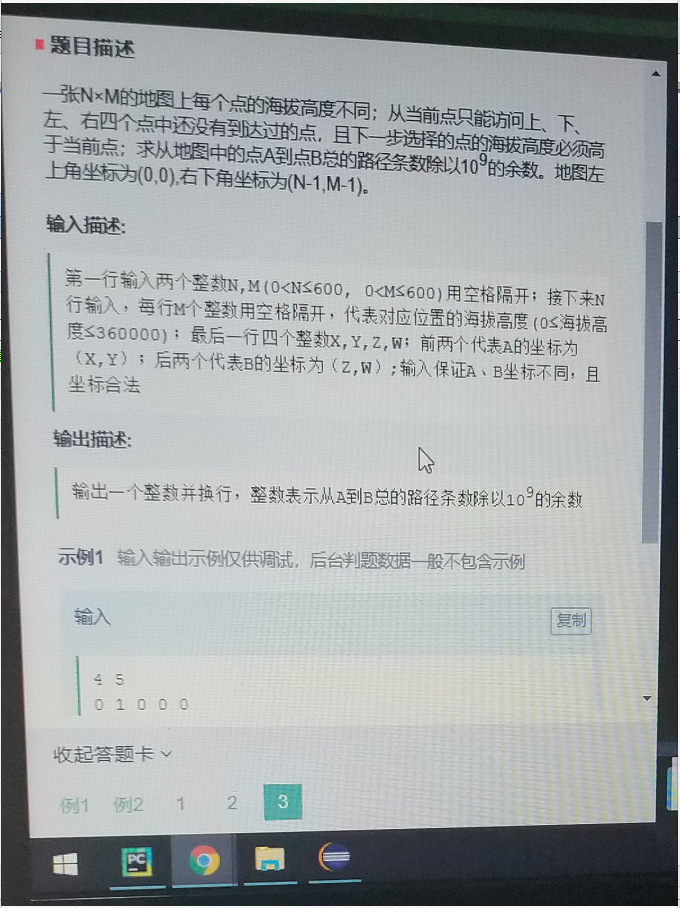

#include <iostream> #include <vector> #include "cmath" using namespace std; int Pathnum = 0; void num_path(vector<vector<int>>, vector<vector<int>>, int, int, int, int, int, int); int main() { int n, m; cin >> n; cin >> m; vector<vector<int>>haiba(n, vector<int>(m, 0));//注意这里的二维数组建立 vector<vector<int>>mask(n, vector<int>(m, 0)); for (int i = 0; i < n; i++) { for (int j = 0; j < m; j++) { cin >> haiba[i][j]; mask[i][j] = 0; } } int ax,ay,bx,by; cin >> ax; cin >> ay; cin >> bx; cin >> by; num_path(haiba, mask, n, m, ax, ay, bx, by); cout << Pathnum % int(pow(10, 9)) << endl; system("pause"); } void num_path(vector<vector<int>> haiba, vector<vector<int>> mask, int n, int m, int ax, int ay, int bx, int by) { if (ax == bx && ay == by) { Pathnum++; return; } mask[ax][ay] = 1; if (ax + 1 < n && mask[ax + 1][ay] != 1 && haiba[ax + 1][ay] > haiba[ax][ay]) num_path(haiba, mask, n, m, ax+1, ay, bx, by); if (ax - 1 > 0 && mask[ax - 1][ay] != 1 && haiba[ax - 1][ay] > haiba[ax][ay]) num_path(haiba, mask, n, m, ax - 1, ay, bx, by); if (ay + 1 < m && mask[ax][ay + 1] != 1 && haiba[ax][ay + 1] > haiba[ax][ay]) num_path(haiba, mask, n, m, ax, ay + 1, bx, by); if (ay - 1 > 0 && mask[ax][ay - 1] != 1 && haiba[ax][ay - 1] > haiba[ax][ay]) num_path(haiba, mask, n, m, ax, ay - 1, bx, by); mask[ax][ay] = 0; }
分析:就是在二维数组那里卡了一下,不然也不会整理这个题。